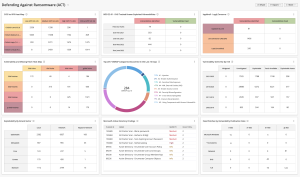Introduction
Last updated: July 17, 2025
Ransomware attacks leverage well-known and established software vulnerabilities and poor cyber hygiene. Successful ransomware attacks can cripple an organization with increased costs and lost revenue. There are many contributing factors to the upward trend of ransomware. The most important is the large number of software vulnerabilities and misconfigurations, along with Active Directory (AD) weaknesses that enable attackers to escalate privileges. Threat actors leverage poor cyber hygiene to their advantage to gain a foothold and propagate attacks. Ransomware has been very profitable for organized crime, which targets lucrative businesses that can afford large payouts. Many organizations purchase ransomware insurance to mitigate the cost of a breach, but insurers are starting to push back against large payouts if the organization is found to be negligent in following industry security guidance.
Ransomware is a symptom of poor cyber hygiene and security awareness, which can impact operational availability and lead to increased cost. Comprehensive and regularly tested Disaster Recovery and Data Recovery plans go a long way toward combating the effects of ransomware and other threats to the business. The Defending Against Ransomware (ACT) Tenable Vulnerability Management Dashboard provides an in-depth focus on cyber hygiene, enabling IT staff to identify vulnerabilities that would have the most impact to the organization during a ransomware attack.
